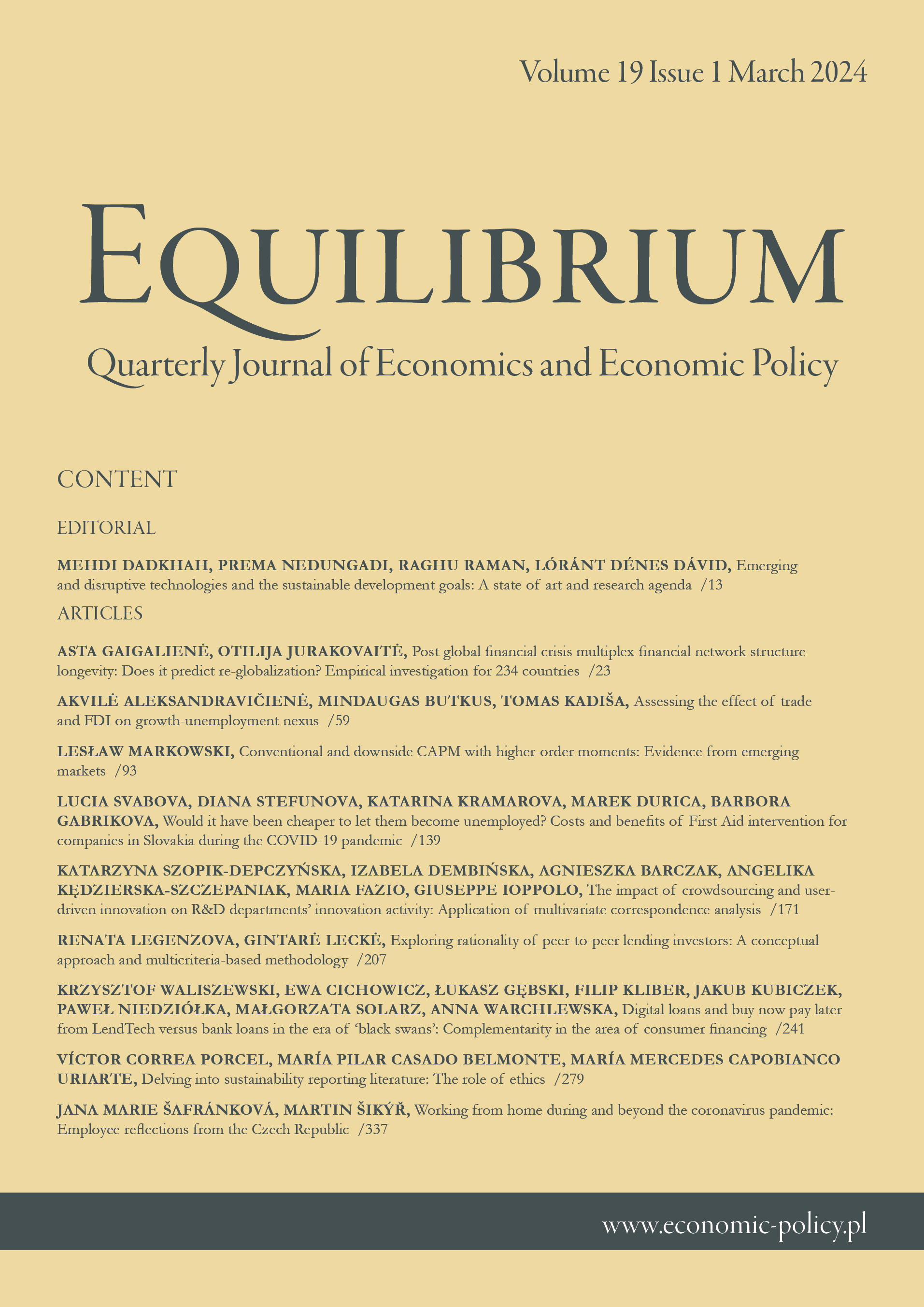Application of Ensemble of Recurrent Neural Networks for Forecasting of Stock Market Sentiments
IF 6.2
Q1 ECONOMICS
Equilibrium-Quarterly Journal of Economics and Economic Policy
Pub Date : 2018-03-31
DOI:10.24136/EQ.2018.001
引用次数: 11
Abstract
Research background: Research and measurement of sentiments, and the integration of methods for sentiment analysis in forecasting models or trading strategies for financial markets are gaining increasing attention at present. The theories that claim it is difficult to predict the individual investor’s decision also claim that individual investors cause market instability due to their irrationality. The existing instability increases the need for scientific research. Purpose of the article: This paper is dedicated to establishing a link between the individual investors’ behavior, which is expressed as sentiments, and the market dynamic, and is evaluated in the stock market. This article hypothesizes that the dynamics in the market is unequivocally related to the individual investor’s sentiments, and that this relationship occurs when the sentiments are expressed strongly and are unlimited. Methods: The research was carried out invoking the method of Evolino RNN-based prediction model. The data for the research from AAII (American Association of Individual Investors), an investor sentiment survey, were used. Stock indices and sentiments are forecasted separately before being combined as a single composition of distributions. Findings & Value added: The novelty of this paper is the prediction of sentiments of individual investors using an Evolino RNN-based prediction model. The results of this paper should be seen not only as the prediction of the connection and composition of investors’ sentiments and stock indices, but also as the research of the dynamic of individual investors’ sentiments and indices.递归神经网络集成在股市情绪预测中的应用
研究背景:情绪的研究和测量,以及情绪分析方法在金融市场预测模型或交易策略中的集成,目前正受到越来越多的关注。认为难以预测个人投资者决策的理论也认为,个人投资者的非理性导致了市场的不稳定。现有的不稳定性增加了对科学研究的需求。本文的目的:本文致力于在个人投资者的行为(表现为情绪)与市场动态之间建立联系,并在股票市场中进行评估。本文假设市场的动态与个人投资者的情绪明确相关,并且当情绪被强烈表达并且是无限的时,这种关系就会发生。方法:采用基于Evolino RNN的预测模型方法进行研究。这项研究使用了AAII(美国个人投资者协会)的数据,这是一项投资者情绪调查。股指和情绪在合并为一个单一的分布组合之前是单独预测的。研究结果和附加值:本文的新颖之处在于使用基于Evolino RNN的预测模型预测个人投资者的情绪。本文的研究结果不仅可以看作是对投资者情绪与股指的联系和构成的预测,还可以看作是个人投资者情绪和股指动态的研究。
本文章由计算机程序翻译,如有差异,请以英文原文为准。
求助全文
约1分钟内获得全文
求助全文
来源期刊
CiteScore
9.20
自引率
3.50%
发文量
28
审稿时长
36 weeks
期刊介绍:
Equilibrium. Quarterly Journal of Economics and Economic Policy is a scientific journal dedicated to economics, which is the result of close cooperation between the Instytut Badań Gospodarczych/Institute of Economic Research (Poland) and Polish Economic Society and leading European universities. The journal constitutes a platform for exchange of views of the scientific community, as well as reflects the current status and trends of world science and economy.
The journal especially welcome empirical articles making use of quantitative methods in: Macroeconomics and Monetary Economics, International Economics, Financial Economics and Banking, Public Economics, Business Economics, Labor and Demographic Economics, Economic Development, and Technological Change, and Growth.
Current most preferable topics and special issues:
The economics of artificial intelligence: business potentials and risks;
Digitalization and entrepreneurship in economics;
Sustainable socio-economic development, environmental and ecological economics;
Transition in the energy market (improving energy efficiency, alternative energy sources, renewable energy, energy security).

 求助内容:
求助内容: 应助结果提醒方式:
应助结果提醒方式:


